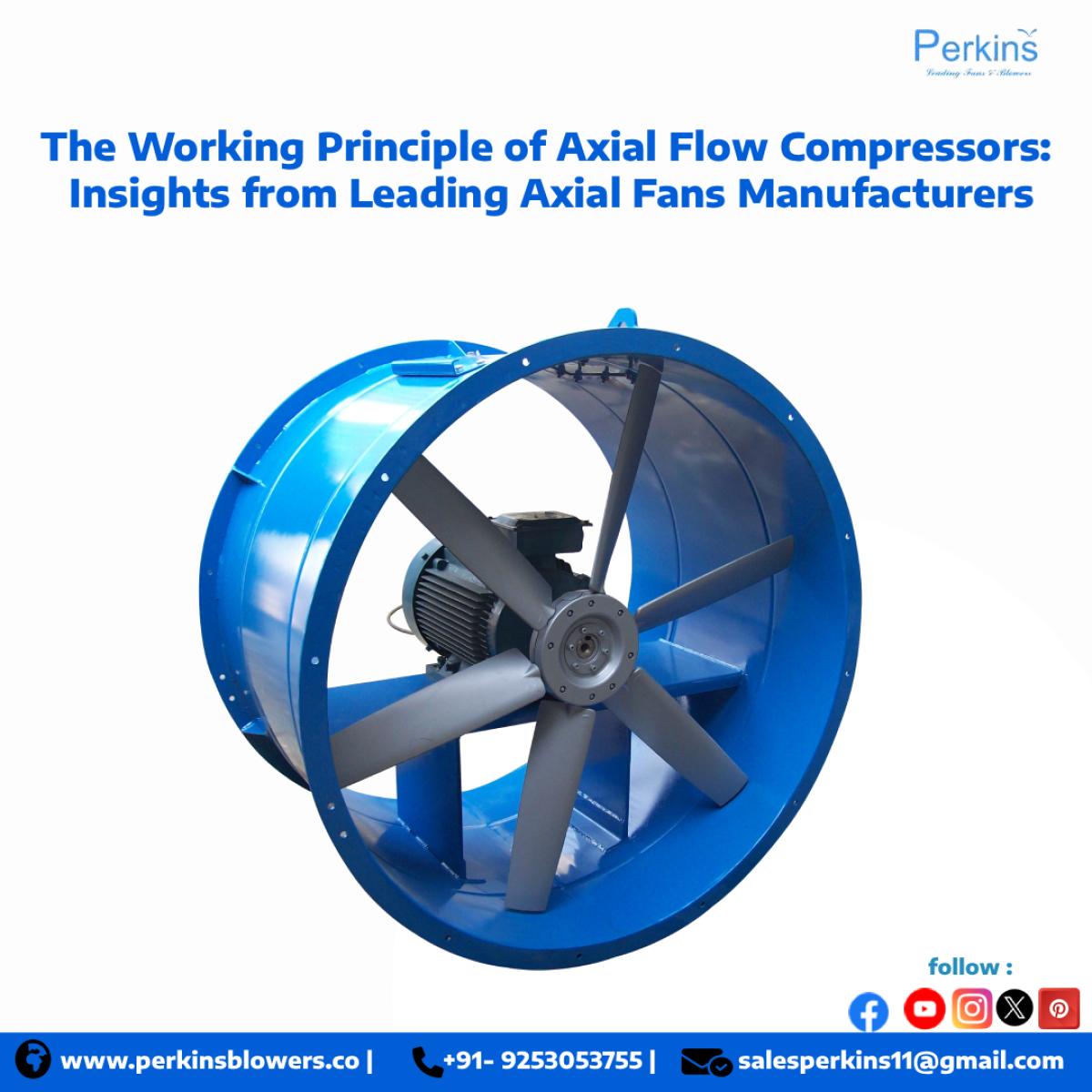
When it comes to fluid dynamics and industrial air handling systems, axial flow compressors play a crucial role in increasing the pressure of fluids like air and gases. Often compared with axial fans in their design and function, these machines are widely used in power plants, jet engines, and various industrial processes. Reputed axial fans manufacturers explain the science behind their operation and how they efficiently increase fluid pressure.
What is an Axial Flow Compressor?
An axial flow compressor is a type of dynamic compressor that increases the pressure of a fluid by forcing it through multiple rows of rotating and stationary blades. Unlike centrifugal compressors, which redirect airflow outward, axial compressors move the fluid parallel to the axis of rotation — hence the name “axial flow.”
Read : How Axial Fans Generate Smooth and Powerful Airflow
How Does an Axial Flow Compressor Increase Pressure?
The process of pressure rise in an axial flow compressor happens in stages:
-
Rotating Blades (Rotors):
-
The rotors are airfoil-shaped blades that impart kinetic energy to the fluid.
-
As the fluid passes through these rotating blades, its velocity increases significantly.
-
-
Stationary Blades (Stators):
-
After the rotors, the fluid passes through stationary blades called stators.
-
These blades convert the high velocity of the fluid into pressure by diffusing the flow and slowing it down.
-
-
Stage-by-Stage Pressure Increase:
-
A single rotor-stator pair provides only a small pressure rise.
-
To achieve the desired output, multiple stages are arranged in sequence, with each stage gradually compressing the fluid.
-
-
Final Discharge:
-
After several stages, the fluid exits at a much higher pressure, ready for use in turbines, combustion chambers, or industrial processes.
-
Applications of Axial Flow Compressors
Due to their high efficiency and ability to handle large volumes of air or gas, axial compressors are used in:
-
Jet engines and gas turbines
-
Power plants
-
Large-scale HVAC systems
-
Industrial ventilation and cooling systems
Role of Axial Fans Manufacturers
While compressors and fans differ in their pressure capabilities, the basic aerodynamic principles are similar. Experienced axial fans manufacturers apply these principles to design fans that move large amounts of air efficiently for industries like cement, steel, textiles, and pharmaceuticals. The expertise in blade design, material strength, and aerodynamics ensures both compressors and fans deliver optimal performance.
Conclusion
Axial flow compressors increase the pressure of fluids by converting kinetic energy into pressure energy through multiple rotor and stator stages. Their efficient design and staged compression make them vital for industries where continuous high-pressure airflow is required. Similarly, leading axial fans manufacturers use the same aerodynamic concepts to create reliable, high-performance ventilation solutions for industrial applications.
